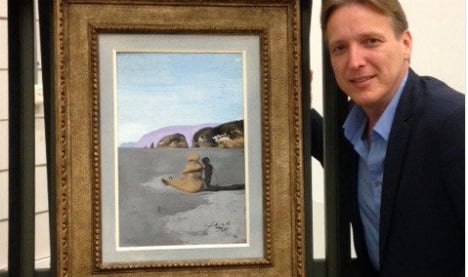Dutch art detective Arthur Brand announced on twitter that he had recovered two works stolen fron the Scheringa Museum of Realist Art in the village if Spanbroek in the northern Netherlands in May 2009.
a picture of the recovered #Dali pic.twitter.com/n2lQaaYyoO
— Arthur Brand (@brand_arthur) July 27, 2016
The artworks, Salvador Dalí’s gouache Adolescence (1941), which features the Catalan artist and his beloved nanny, and Tamara de Lempicka’s oil painting La Musicienne (1929), were stolen in a raid by masked gunmen.
Several masked men threatened staff and visitors with a gun and then drove off in a car with the two tableaux, police said at the time.
Brand told the Dutch newspaper De Telegraaf that the artworks had been handed to him by a criminal gang who were given them in lieu of payment.
Brand said he had been contacted by an intermediary as the gang “did not want to find themselves guilty of the destruction or resale of works of art”
The artworks were handed over to Scotland Yard who are in contact with the rightful owners who wish to remain anonymous.



 Please whitelist us to continue reading.
Please whitelist us to continue reading.
Member comments